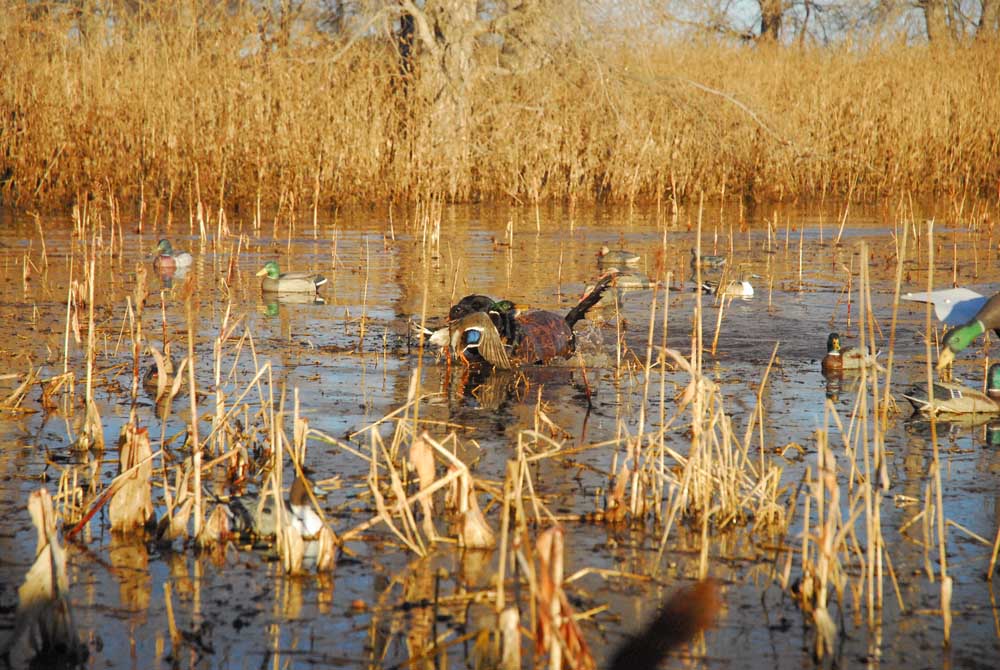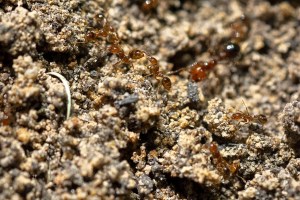A Changing World: Ducks Are Still Coming, How They Are Hunted Is Evolving
Published 4:05 pm Thursday, November 4, 2021

- While most of the ducks migrating down the Central Flyway end up in Texas, hunters in the state are moving more to managed waters for success.
This is a wild card year for duck hunters. The bad news is because of an extended period of drought, duck numbers are expected to be down this winter.
The good news is just about every duck that comes down the Central Flyway is going to find its way into Texas.
Trending
“Duck production in the prairie potholes of North Dakota, South Dakota, Saskatchewan and Alberta were reported to be below average due to extensive drought this summer,” said Kevin Kraai, Texas Parks and Wildlife Department Waterfowl Program Leader. “With that said, there are still millions of ducks in the Central Flyway and we are on the heels of multiple excellent breeding seasons for ducks over the last few years.”
Duck hunting is Texas’ third-most popular fall hunting type with hunter numbers topping at about 110,000. Overall, waterfowl hunter numbers are estimated at about 130,000. According to TPWD, about half of the hunters are along the coast, followed by East Texas and quickly expanding interest in North Texas.
While hunter numbers do not seem overwhelming, the truth is there are more hunters than public places to put them. That has meant in recent years duck hunting has followed the path of deer, quail, goose and dove hunting with a growing number of outfitters offering hunts on less-pressured private lands, and more landowners in the state starting to hold water to create seasonal wetlands.
“Outfitting, or commercialization, has exploded and without question people are spending more time and money farming for ducks. It has turned into quite the industry,” Kraai said.
With prices for guided hunts varying across the state from $200 to $300 a day, it can be a viable alternative to the cost and success of self-guided hunts.
Kraai noted at the same time landowners interested in hunting have learned by creating something as small as a stock tank or as big as a flooded bottom they can increase local bird numbers.
Trending
In North central Texas and the Panhandles, hunters and outfitters are utilizing NRCS lakes, stock ponds and playas.
The bulk of the water management is coming on the coast where clubs are not only managing hunting waters, but are setting aside roost sites as well to give the birds a place to escape pressure. Many of these are benefiting from better access to water and a return of rice farming.
“They went through a period of water restrictions and changes overnight. That has loosened some and rice acreage has stabled out and actually been increasing in the last couple of years. The interest of people managing their spots on the coast has exploded,” Kraai explained.
TPWD waterfowl biologists have been busy working with landowners to determine if their land is suitable to waterfowl management.
“We have a strong history of technical guidance. Where we struggle now is being able to show up, give advice and be able to offer a cost-sharing product. We had one once and hope to revitalize something like that,” Kraai said.
The efforts are working. Winter aerial surveys are actually indicating an increased number of ducks and geese wintering on managed areas.
In East Texas, much of the management is coming along river bottoms where landowners have the ability to back up 12 to 18 inches of water in the fall.
Even on managed lands, though, hunters have to realize what their efforts can produce.
“You have to realize the expectations that are possible. On a smaller scale you may be able to get a few ducks. On a larger scale you can expect more birds using the land,” Kraai said.
There is a learning curve on how to use the wetlands as well. Just like public waters, few can withstand heavy pressure and continue to produce ducks through the season.
Another reality check is that Texas hunters should not expect to see mallards like they once did.
“From all our monitoring data we have had, ducks are still coming to Texas. The only species we are not seeing coming is mallard. We don’t have the carrying capacity and food of other places,” Kraai said.
Mallards are considered the trophy duck for hunters. Kraai said because of intense hunting pressure, biologists have found that the birds have morphed to snow goose-like behaviors moving in large flocks, roosting in deep-water lakes and transitioning to dry land feeding. With mallards only moving as far as they have to to find open water and food, this has the birds short-stopping in states farther north.
“Climate change is another big part of it. We have had warmer winters. When flying last January, there was significant open water in North Dakota and South Dakota. We have never had open waters in the Dakotas in almost ever,” Kraai said.
In another good news/bad news scenario, the drop in duck numbers, specifically mallards, will not impact limits for 2022-23, but if numbers remain low another year of a reduction is coming.
“We can’t contain this for another year. It will be difficult to maintain the liberal option if we stay in a drought,” Kraai said.
Bag limits are based on the number of mallards in the population from one season to the next.
The early regular duck season in the High Plains Mallard Management Unit opened Oct. 30. It opens Saturday in the South Zone and Nov. 13 in the North Zone.





